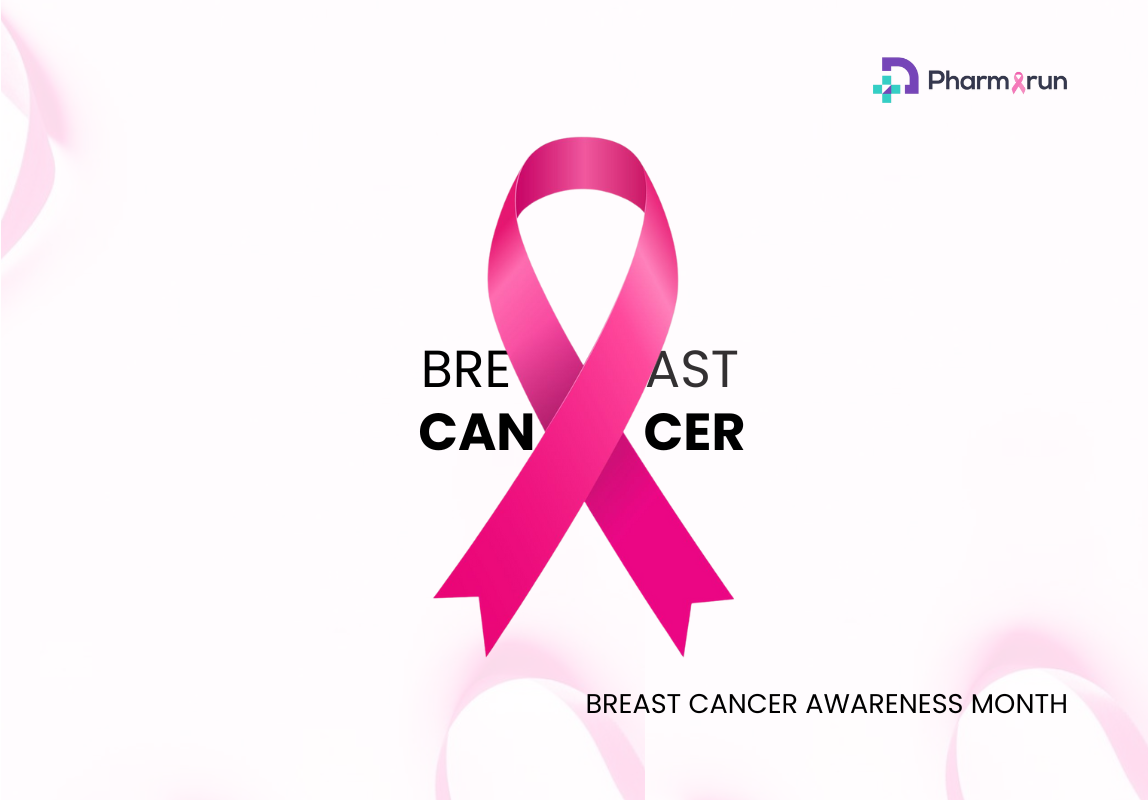Sickle Cell Disease: Symptoms and Causes | Pharmarun | Online Pharmacy in Nigeria

What is Sickle Cell Anemia?
Sickle cell anemia is a type of inherited blood disorder that falls under the broader category of sickle cell disease. In this condition, the red blood cells undergo a transformation, changing from their normal round and flexible shape into rigid and sticky sickled cells. The presence of sickled cells hinders the proper functioning of red blood cells, which is to transport oxygen throughout the body. Additionally, sickled cells have a shorter lifespan compared to healthy red blood cells. As a result, the body lacks a sufficient number of healthy red blood cells, leading to the development of anemia, the characteristic feature that gives sickle cell anemia its name.
Sickle cell anemia is not a death sentence. Many individuals in Nigeria and around the world are thriving despite having this condition. Sickle cell anemia typically arises when individuals inherit contradictory genes from both parents, emphasizing the significance of genotype matching and the need for proper screening before selecting a partner.
In Nigeria alone, there are an estimated 100,000 to 150,000 newborns living with sickle cell disease annually, accounting for 33% of the global burden of the disease. Therefore, it is necessary for everyone to read and gain knowledge from this article.
Genotypes and Their Meaning
Genotype refers to the genetic makeup of an organism, which is encoded in its DNA, the hereditary material within cells. DNA is organized into segments called genes, which code for proteins. Each gene can exist in different versions, and the specific version inherited by an organism determines its genotype. The genotype of an organism plays a role in controlling its phenotype, which encompasses observable traits such as hair color, eye color, and even microscopic characteristics like the specific version of a protein produced within cells.
Types of Genotype
There are different types of genotypes depending on which versions of a gene an individual inherits. The two main types of genotypes are heterozygous and homozygous. Heterozygous genotype indicates that an individual has inherited two different versions of a gene, while homozygous genotype indicates the inheritance of two identical versions of the gene.
- AA: This genotype is considered normal. Individuals with an AA genotype do not carry the sickle cell trait and are not affected by sickle cell disease. Their red blood cells maintain their normal round shape, allowing for smooth blood flow and adequate oxygen supply throughout the body.
- AS: Individuals with an AS genotype inherit one normal hemoglobin gene (A) and one sickle hemoglobin gene (S). They are carriers of the sickle cell trait but generally do not experience significant health complications. However, under certain circumstances, such as extreme physical exertion or low oxygen levels, their red blood cells may sickle, leading to temporary symptoms similar to sickle cell disease.
- AC: AC genotype is relatively rare. Individuals with this genotype inherit one normal hemoglobin gene (A) and one gene for hemoglobin C (C). While the AC genotype does not cause sickle cell disease, it can lead to mild symptoms and complications similar to those seen in individuals with the AS genotype.
- SS: The SS genotype is associated with sickle cell disease, the most severe form of the condition. Individuals with this genotype inherit two sickle hemoglobin genes (S) and are at a high risk of experiencing painful episodes called sickle cell crises. These crises occur when the sickled red blood cells block blood flow, leading to tissue damage, severe pain, organ dysfunction, and other complications.
- SC: Individuals with the SC genotype inherit one sickle hemoglobin gene (S) and one gene for hemoglobin C (C). This genotype typically results in a milder form of sickle cell disease compared to the SS genotype. While individuals with the SC genotype may experience similar complications, their symptoms are generally less severe.
What Blood Genotypes Are Compatible?

Genotype and blood groups
An individual's blood group is determined by heredity, meaning it is inherited from parents to offspring. It is a combination of antibodies, antigens, and other molecules found on the surface of red blood cells, which play a role in the body's immune response.
The International Society of Blood Transfusion (ISBT) has recognized more than 35 blood groups, but there are four main groups that are commonly encountered:
Blood group A
Blood group B
Blood group AB
Blood group O
In certain rare cases, red blood cells may possess a distinct substance called the Rhesus Factor or Rh factor, also known as the RhD antigen. A positive RhD test indicates the presence of the antigen on the red blood cells, while a negative RhD test indicates its absence.
Symptoms Of Sickle Cell Anemia
Sickle cell anemia, the most severe form of sickle cell disease, is characterized by the production of abnormal hemoglobin S, resulting in the sickling of red blood cells. This can lead to various symptoms, including:
- Fatigue and weakness: Reduced oxygen-carrying capacity of the blood can cause persistent tiredness and weakness.
- Anemia: The destruction of sickle-shaped red blood cells leads to a low red blood cell count, causing anemia.
- Jaundice: Rapid breakdown of red blood cells can result in jaundice, characterized by yellowing of the skin and eyes.
- Shortness of breath: Anemia can cause difficulty in breathing, especially during physical exertion.
Types of sickle cell crisis.
Sickle cell crisis refers to episodes of intense pain and other complications experienced by individuals with sickle cell disease. There are different types of crises, including:
- Vaso-occlusive crisis: This is the most common type of crisis and occurs when sickle-shaped red blood cells block small blood vessels, causing severe pain in various body parts.
- Hemolytic crisis: It occurs when there is a sudden increase in the destruction of red blood cells, leading to anemia and jaundice.
- Splenic sequestration crisis: This crisis occurs when sickled red blood cells get trapped in the spleen, causing a sudden enlargement of the organ and a drop in hemoglobin levels.
Vaso-occlusive crisis
Vaso-occlusive crisis, often referred to as a pain crisis, is one of the hallmark complications of sickle cell disease. During a vaso-occlusive crisis, the blocked blood flow can result in excruciating pain that may require hospitalization and strong pain medications. This crisis can affect various organs and body parts, including the bones, abdomen, chest, and joints. The pain can be debilitating and significantly impact the quality of life for individuals with sickle cell disease.
Other complications associated with sickle cell disease:
- Infections: Due to a weak immune system, individuals with sickle cell disease are more susceptible to infections, particularly those caused by bacteria, such as pneumonia and urinary tract infections.
- Organ damage: The chronic and repeated sickling of red blood cells can result in damage to organs like the lungs, kidneys, liver, and spleen.
- Stroke: The abnormal flow of blood caused by sickled cells can increase the risk of stroke, especially in children.
- Delayed growth and development: Sickle cell disease can affect a child's growth and development, leading to delayed puberty and stunted growth.
Sickle cell disease and pregnancy.
Pregnancy can cause unique challenges for women with sickle cell disease. Some specific symptoms and considerations during pregnancy include:
- Increased risk of complications: Pregnant women with sickle cell disease have a higher risk of experiencing vaso-occlusive crises, infections, and other complications.
- Anemia management: Close monitoring of hemoglobin levels is necessary to ensure adequate oxygen supply to the growing fetus.
- Preconception counseling: It is compulsory for women with sickle cell disease to receive proper counseling and medical advice before planning a pregnancy to manage their condition effectively.
TESTING AND TREATMENT OPTIONS FOR SICKLE CELL DISEASE
- Hemoglobin electrophoresis: This laboratory test helps identify the presence of abnormal hemoglobin, such as hemoglobin S, which is characteristic of sickle cell disease.
- Newborn screening: Many countries have implemented newborn screening programs to identify infants with sickle cell disease early on. Blood samples are collected from newborns to detect abnormal hemoglobin levels.
- Genetic testing: Genetic tests can determine the specific mutations in the HBB gene associated with sickle cell disease. This testing can also help identify carriers of the disease.
Treatment options for sickle cell disease
There is currently no universal cure for sickle cell disease, several treatment options aim to manage symptoms and prevent complications. These include:
- Pain management: Medications, such as nonsteroidal anti-inflammatory drugs (NSAIDs) and opioids, are often prescribed to manage pain during vaso-occlusive crises.
- Hydroxyurea: This medication increases the production of fetal hemoglobin, which can reduce the frequency and severity of sickle cell crises.
- Blood transfusions: Regular blood transfusions can help increase the number of healthy red blood cells in the body, reducing the risk of complications and improving overall well-being.
- Antibiotics and vaccinations: Preventative measures, such as antibiotic prophylaxis and vaccinations, are often recommended to reduce the risk of infections, a common complication in sickle cell disease.
Bone marrow transplant as a potential cure
Bone marrow transplant, also known as hematopoietic stem cell transplant, offers the potential for a cure in some cases of sickle cell disease. This procedure involves replacing the patient's diseased bone marrow with healthy stem cells from a compatible donor. Successful bone marrow transplant can restore normal production of red blood cells, effectively curing the disease.
.png)
Living with Sickle Cell Disease
Living with sickle cell disease requires adopting specific management strategies, making lifestyle modifications, and accessing appropriate support systems to enhance the quality of life.
Management strategies for sickle cell crisis
- Pain management: During vaso-occlusive crises, pain can be severe. Employing effective pain management strategies, such as taking prescribed medications on time, applying heat or cold packs, and practicing relaxation techniques, can help alleviate pain.
- Hydration: Staying well-hydrated by drinking plenty of fluids can help prevent dehydration, which can trigger or exacerbate sickle cell crises.
- Recognizing triggers: Identifying personal triggers, such as extreme temperatures, stress, or certain activities, can help individuals with sickle cell disease take proactive measures to avoid or minimize the impact of triggers.
- Regular medical check-ups: Maintaining regular visits with healthcare providers for check-ups and monitoring is crucial to identify any potential complications or early signs of disease progression.
Lifestyle adjustments for individuals with sickle cell disease
- Healthy lifestyle habits: Adopting a healthy lifestyle can positively impact overall well-being. This includes getting regular exercise, following a balanced diet rich in fruits, vegetables, and whole grains, and avoiding tobacco and alcohol use.
- Rest and self-care: Sickle cell disease can be physically demanding. It's important to prioritize rest, ensure sufficient sleep, and practice self-care techniques to manage fatigue and prevent exhaustion.
- Temperature regulation: Extreme temperatures can trigger sickle cell crises. It's beneficial to dress appropriately for the weather and use temperature control measures, such as fans or air conditioning, to maintain a comfortable environment.
- Avoiding high altitudes and low oxygen environments: High altitudes or low oxygen environments can increase the risk of complications for individuals with sickle cell disease. It's important to consult with healthcare providers before planning such trips. Click the link in our bio to
Conclusion
Living with sickle cell disease can present various challenges, but with the right management strategies, lifestyle modifications, and support systems in place, patients can lead fulfilling lives.
Pharmarun is a health tech company in Nigeria with the aim to make healthcare accessible to everyone everywhere. We are currently on a support program for individuals with chronic health conditions, where we provide them with the necessary healthcare tools and resources to be able to take care of their health better. It is completely free to join this community. Fill this form to join now.
Lastest bants
Stories, facts and bants on this journey to ensuring access to medication for Africa
Download Pharmarun today!
Get started with us today by using our delivery service. Also, be one of the first to experience our unique healthcare platform.





